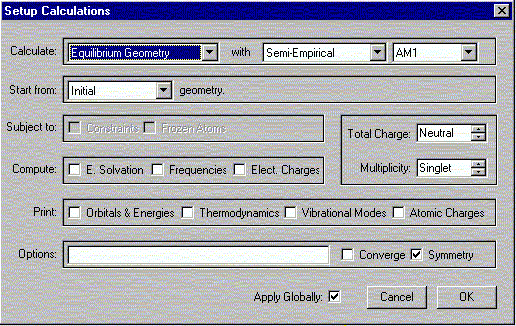
Problem set #2 (Meeting 2)
ATTN: answers to the below questions are due at the start of meeting 2; these answers should be part of your pre-lab write-up. Show pertinent equations where appropriate.
1. Referring to the benzoin condensation, answer the following questions.
a. What is the function of the sodium hydroxide in the reaction?
b. What is the function of 95% ethanol in the reaction?
c. A student observes white crystals on the cap of the benzaldehyde bottle. How can he explain this observation?
d. A student starts off with 0.3 g of thiamine hydrochloride and 2 mL of 0.20 N sodium hydroxide solution. Afterwards, he adds 3.50 mL of benzaldehyde to his solution. After teh work-up, he isolates 2.30 g of benzoin. Determine the yield for the reaction. Show your calculations.
2. Vacuum filtration
a. Draw a sketch for the setup used for the filtration of the benzoin and label all parts needed.
b. Why is it important to use filter paper in this step?
c. Why are the crystals rinsed with ice-cold water and ice-cold 95% ethanol?
3. Referring to the elimination reaction, answer the following questions.
a. Why is it important to distill slowly during the first distillation?
b. Many of the reaction mixtures change color to dark green or blue, or even black. Rationalize this observation.
c. What is the function of the saturated sodium chloride solution used during the work-up?
d. Which purpose does the second distillation serve?
4. Infrared Spectroscopy
a. How is the IR spectrum for the final product obtained in the lab? Outline a brief procedure.
b. What are the most important changes in the IR spectrum going from cyclohexanol to cyclohexene?
c. A student acquires an IR spectrum and mainly observes four broad peaks at ~3400, 2135, 1649 and 748 cm-1. Which conclusion(s) can he draw?
5. a. Using PC Spartan 2002, perform the following calculations for the alkenes: terpinolene, limonene, a-terpinene, isoterpinolene. Make sure that all hydrogen atoms are present and there are also no extra ones either.
b. Select Calculations from the Setup menu.

The following window should appear. Select the options shown.

Verify that the Charge is Neutral and Multiplicity is Singlet. Click OK.
Select Submit from Setup menu.

Then click OK to exit dialog. Close the previous window.
Select Submit from Setup menu. When the calculation is completed you will be notified. It should not take more than one minute for the calculation to complete under normal circumstances. Make sure that you have only one window open at this point. The messages are usually displayed in the first window, and often not in the window you are working in at this point.
Under the Display menu, select Properties. Record the value for the Energy.

1. Based in the observed trends in trends in the heat of formation (=energy), which alkene is the most stable and which one is the least stable one? Can you rationalize these observations? Do the obtained data match with your expectation? If not, what is the conclusion?
2. Can you explain the product distribution observed for the elimination of water from a-terpinol (see reader page 20)?
Problems with calculations: Check here